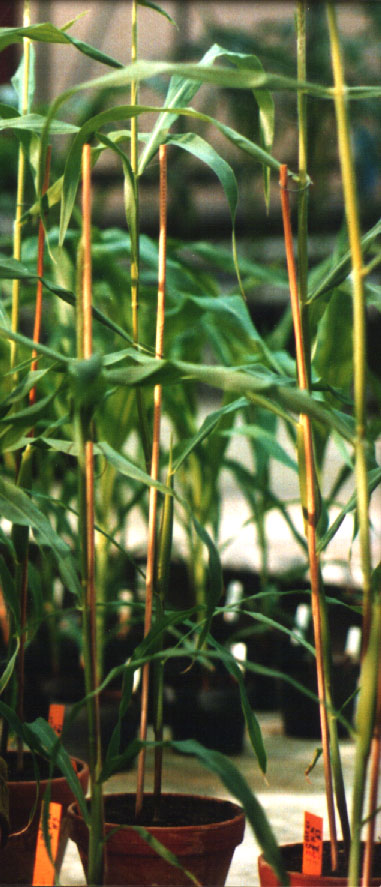
Original URL: http://www.mpiz-koeln.mpg.de/~theissen/grouphome/maize.html
Botany online 1996-2004. No further update, only historical document of botanical science!
 |
Maize is a monocotyledonous plant species and belongs to the grass family
It is monoecious, the male inflorescence (tassel) develops in a terminal position, whereas the female inflorescences (ears) grow in the axil of vegetative leaves. The inflorescences, as typical for grasses, are composed of spikelets. In the case of maize each spikelet contains two florets (the grass flower) enclosed by a pair of bracts (inner and outer glume). Each floret consists of two enclosing bracts (lemma and palea), two lodicules (scale-like organs, prominent only in male flowers), three stamens and a central pistil enclosing a single ovule. The grass flower is sufficiently different from a typical angiosperm flower. The latter is composed of concentric whorls of sepals and petals enclosing whorls of stamens and pistils. The homologies of the angiosperm flower-tissues to those of the grass floret have been debated for more than 200 years. |
